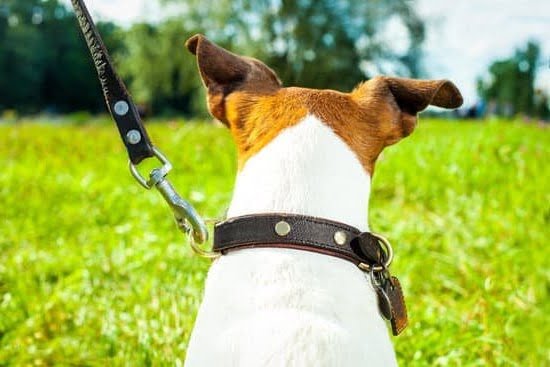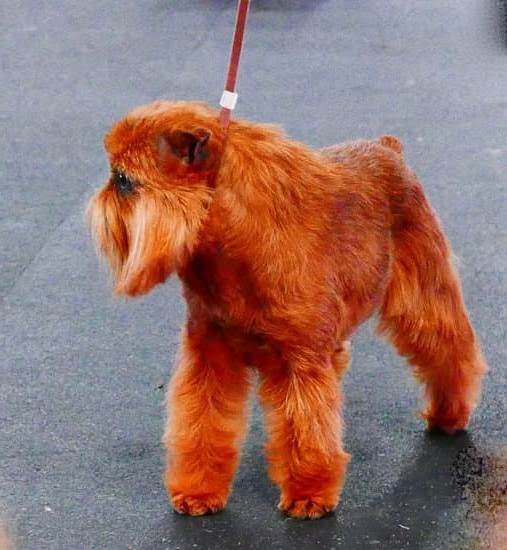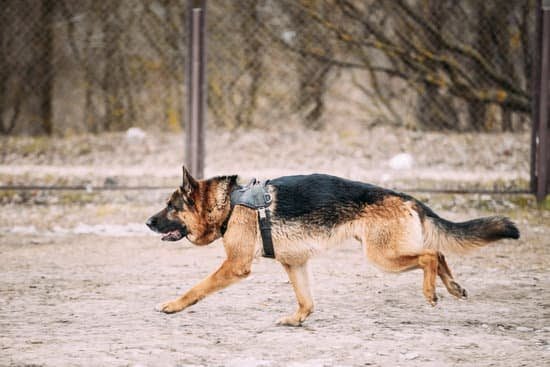Introduction
Dog grooming is a growing career field that requires specialized skills and knowledge. It involves styling, bathing, and caring for a dog’s coat in order to keep them looking their best. A dog groomer must possess both technical skills as well as an understanding of the animals’ health and behavior. They need to have patience and be gentle with animals, particularly dogs.
In order to be successful in this profession, there are certain trainings that can help equip a future dog groomer with the necessary knowledge and expertise. This includes both formal training courses as well as on-the-job experience or apprenticeships with experienced professionals. Training courses often include courses about basic grooming techniques, understanding animal behavior and care, skin conditions, learning how to use proper tools, clipper numbers, professional terminology and product/toolsterminology. Other topics may include pet first aid, colouring techniques and creative grooming styles throughout different breeds of dogs. Generally speaking such coursework can range greatly depending on the needs of each individual student and their goals within the industry overall.
In addition to formal training courses, having hands-on experience is invaluable when it comes to being a successful groomer. Having an apprentice program or working at a pet store or vet clinic can provide ample opportunities to learn more about handling various species of animals while gaining insight into caring for them in an efficient way. When combined with classroom learning these proves highly helpful for aspiring dog groomers when it comes time for them to begin their careers.
Examining Important Dog Grooming Skills
Becoming a dog groomer requires an understanding of canine anatomy and knowledge of grooming techniques. Dog groomers must know how to use various types of clippers, scissors, trimmers, dryers, and brushes. They must also be able to identify signs of certain medical conditions in canines by monitoring their skin, coat, and nails. In addition to basic grooming techniques, dog groomers should familiarize themselves with breed-specific cuts that customers may request. To maintain health certifications and ensure quality service, they must stay updated on the latest trends in grooming products and resources.
Other important skills for becoming a dog groomer include developing good communication skills with customers as well as knowledge of animal behavior principles. Animal behaviorists will often discuss common reasons for grooming anxiety among canines such as fear of clippers or unfamiliar people working close around them. Dog groomers should consider taking classes on animal behaviors so they are prepared to deal with any anxious dogs they encounter. Additionally, it’s essential for dog groomers to possess physical strength tolerance necessary to lift large dogs when standing or grooming them in difficult positions. Finally, organized recordkeeping is also necessary in order to properly track supply inventory including medications used while treating medical conditions during the grooming process.
Formal Education Requirements for Dog Groomers
If you are interested in becoming a professional dog groomer, there are educational and certification requirements you must meet. Generally speaking, it is possible to become a dog groomer without any formal education if you have at least one year of hands-on experience in the industry. However, for most people, the best way to learn the necessary skills and knowledge is to attend a professional grooming school and earn an accredited degree or certification.
The types of courses available vary greatly depending on the program and what your specific goals and interests may be. Many courses focus on animal health, behavior and grooming basics, while others emphasize animal nutrition and anatomy. You can also find specialized courses focusing on certain breeds of dogs or breeds with unique equipment requirements. Additionally, certificate programs often offer classes in pet styling techniques such as brush cutting and trimming, hand-scissoring, styling mohawks or poodles’ coats into shapely contours or teddy bear cuts. Through classes related to marketing, business management and customer service, it’s also possible to gain skills to open your own grooming business one day.
Types of Courses for Dog Grooming Professionals
To become a successful dog groomer, you will need to complete an appropriate set of educational courses. Dog grooming courses can offer specialized instruction in a wide range of topics related to the profession, such as canine anatomy and physiology, grooming techniques, nutrition and health care, disease identification and prevention, pet handling and behavior, customer service, business management and more. Additionally, aspiring dog groomers should consider taking classes that cover certification in pet first aid and CPR. With proper training, grooming professionals can provide safe and beneficial services while building confidence in their customers. Additionally, they may be able to work toward special certifications from groups such as the National Dog Groomers Association of America (NDGAA). Such certifications emphasize safe practices for all involved parties and can provide groomers with advanced credentials for others to recognize their skills.
Dog Grooming Training Programs Explained
Dog groomers are increasingly in demand. If you love animals, enjoy the challenges of different grooming challenges, and want to start your own business, becoming a professional dog groomer is an excellent choice. To become a certified professional dog groomer and legally operate as one in almost all states, formal training and certification are required.
There are several general types of dog grooming training programs available: online courses, in-person classes, apprenticeships, and certification/licensing exams. Online courses typically provide instruction on breeds and breed-specific care, basic styling techniques, health measures and safety protocols, tools and equipment handling, care of coat finishes, customer service skills and business operations basics. Some online programs may offer certification after course completion; however, to be considered a licensed professional you will likely still have to pass a license exam or complete an apprenticeship program.
In-person classes are often held at schools or grooming establishments specifically designed for teaching groomers the art of bathing and trimming dogs. These intimate classes can often be more concentrated than an online course with real hands-on experience supervised by experienced instructors. Apprenticeships usually require prospective groomers to work with an established groomer up close for 6 months or more before taking their licensing exam. In some cases mentors may even provide guidance in setting up operations for those hoping to establish their own business after passing their test.
Finally there are license exams that need to be taken (or equivalent certifications gained) so that the student can become a licensed professional dog groomer in whatever State they reside in or plan to do business in. These typically involve both theoretical data such as local laws concerning pet owners rights as well as practical tasks using mannequins or live animals under supervision so they can showcase competent technical skills relevant to the profession within state guidelines
What Does It Take to Get Certified as a Dog Groomer
In order to become a certified dog groomer, you will need to receive the proper training and obtain the necessary certifications from a recognized dog grooming school or organization. To get started in this field, it is important to have an understanding of the proper techniques for cleaning, clipping and trimming dog fur that should be learned through lectures, hands-on demonstrations and actual practice sessions with animals. You may also learn about various tools and equipment used in dog grooming practices. Additionally, many courses cover topics such as skin care, body shape guidelines, behavior management and safety protocol when caring for pets.
Once basic training has been completed, individuals interested in becoming certified as a dog groomer may need to pass an assessment or examination administered by the appropriate governing body or organization. Depending on the country or region in which one seeks certification, there may be different requirements that must be fulfilled prior to being able to practicedog grooming professionally. For example, some areas may require applicants to complete further coursework before receiving a license or certificate of completion from their program of choice. Finally, it is important for potential groomers to acquire any necessary insurance for themselves and/or their business before offering services to pet owners.
Making the Most of Dog Grooming Certification Opportunities
Becoming a certified dog groomer involves more than just buying tools and starting to style pooches. It is a complex undertaking which starts with attending classes or program to gain knowledge in the professional field of pet styling. Those who wish to pursue a career as a dog groomer must understand basic grooming techniques, along with obtaining more advanced skills such as hygiene, safe handling practices for animals, clipping and trimming nails, and various other approaches used in pampering pets. Once the formal training is received, it should be supplemented with hands-on experience by assisting an established groomer in her salon; this is often the preferred way to hone expertise in the pet industry.
Next steps may involve becoming certified by national grooming associations that offer official credentials. Through these organizations, professionals can focus on specialties such as creative styling and coloring, competitions, judging events and even showing their own dogs at specific conventions. Most certification processes require taking written exams or producing portfolio pieces for evaluating talent and develop skillsets for achieving excellence in their chosen field of specialty within canine cosmetology. Finally, taking continuing education courses also contributes to learning about industry trends given that technology regularly sets new ways for pet care services.
What Are the Benefits of Apprenticing as a Dog Groomer?
Apprenticing as a dog groomer is beneficial in that it allows you to gain hands-on experience and mentoring from an experienced groomer. During your apprenticeship, you will learn valuable skills, such as basic bathing and grooming techniques, identifying skin issues, managing behavior issues, performing oral exams, and trimming and clipping nails. You’ll also gain a better understanding of not just the basics of dog grooming but common dog breeds and the grooming requirements each breed requires. Apprenticeships help build confidence by providing one-on-one instruction with experienced groomers which can prove invaluable. Additionally, since employers are more likely to hire someone with experience over someone without, many apprenticeship programs offer guaranteed employment after successful completion.
What Tools and Resources Can Help You Succeed as a Dog Groomer?
In order to become a successful dog groomer, you’ll need adequate training and knowledge of canine anatomy, grooming techniques and the use of professional grooming tools. Many pet stores, community colleges and vocational schools offer professional dog grooming courses that teach everything from identifying common breeds to the proper way to bathe, brush, trim and style fur.
Once enrolled in a course or program, aspiring groomers should familiarize themselves with an array of tools and resources related to their profession. Dog owners may benefit from detailed knowledge of shampoo types, clipper blades speeds, coat types and products that can best keep their pet’s coat healthy. Keeping up with latest industry news is essential for staying current on latest trends in haircuts, trim shape sizes and more. Books written by experienced professional groomers often provide useful information about cat care, dog behavior and working with different breeds. Practical experience can also be gleaned through internships at local pet salons or animal hospitals. Joining a professional organization like the National Dog Groomers Association of America NDGAA also enhances credibility as well as job prospects down the line.
Conclusion
By becoming a professional dog groomer, you can make use of your love for animals in a meaningful and rewarding way. Not only will you be helping man’s best friends look their best and feel their most pampered, you will be doing something that has positive impacts on physical and mental health of canines—and those lucky enough to have them as pets. A professional dog groomer is well-rewarded with the satisfaction of providing both dogs and dog owners with an improved quality of life. Being able to do this every day is a gift that should not be taken lightly. As long as you are dedicated to learning the skills needed to properly guard, cleanse, trim and style your furry clients, you can make significant strides towards success while experiencing the joys that come from making a difference in dogs’ lives.

Welcome to the blog! I am a professional dog trainer and have been working with dogs for many years. In this blog, I will be discussing various topics related to dog training, including tips, tricks, and advice. I hope you find this information helpful and informative. Thanks for reading!





